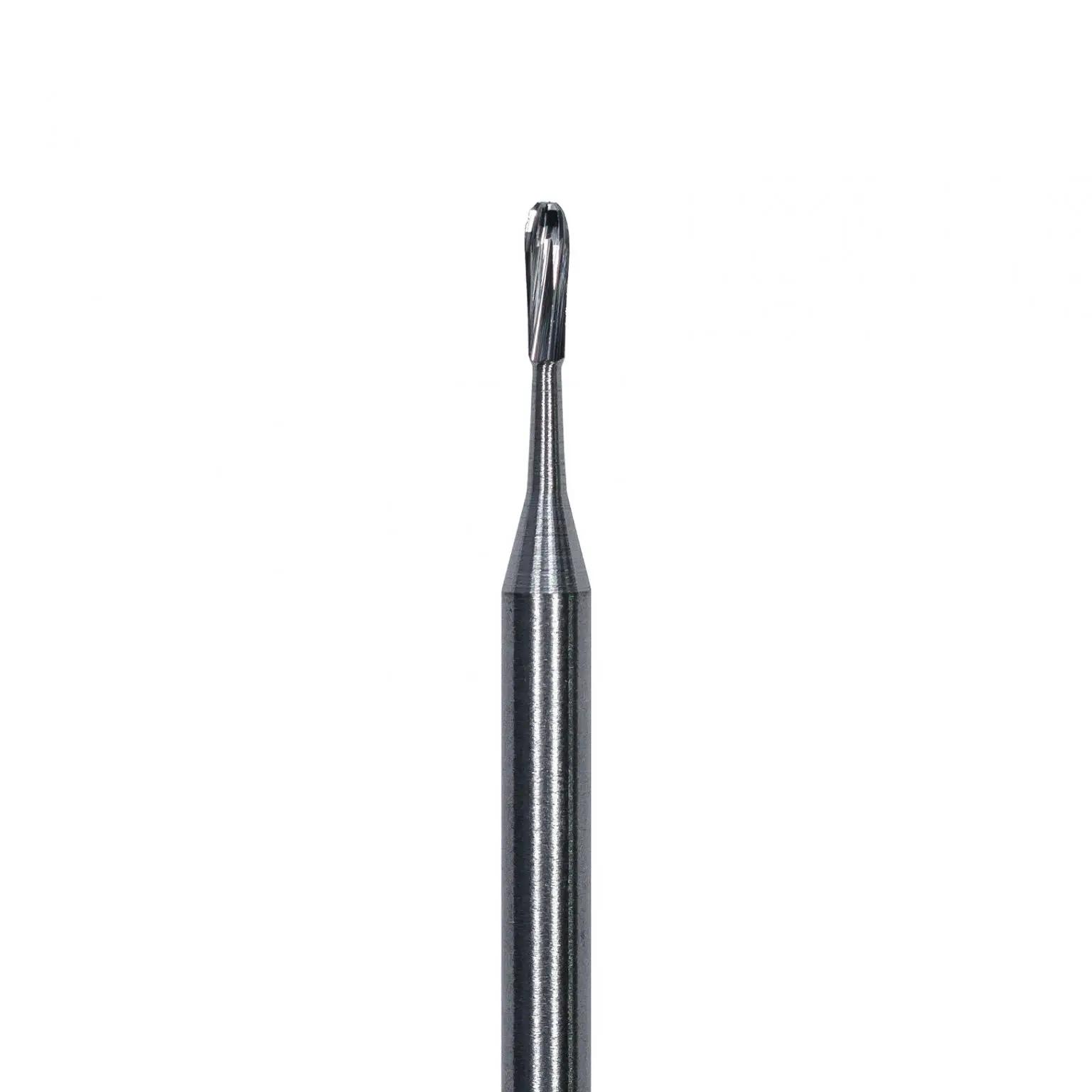Introduction to Straight Handpiece Burs
In the intricate world of dentistry, precision, and efficiency are paramount, and essential tools like straight handpiece burs play a vital role in achieving these goals. These burs are indispensable in dental procedures, assisting professionals in various tasks ranging from cavities preparation to precise shaping during restorative work. As dental technology advances, so does the variety and functionality of burs available for straight handpieces, prompting dental professionals to understand the options and make informed choices based on their needs.
● Overview of Straight Handpieces
Straight handpieces are integral components of dental practices, characterized by their direct drive from the motor, resulting in high power and reliability. They are especially useful in a variety of procedures, including oral surgery and laboratory applications. Their design facilitates ease of use and control, making them a staple in routine dental workflows.
● Importance and Use in Dentistry
The use of straight handpiece burs is not limited to a few select procedures. Instead, these tools find relevance across a wide spectrum of dental interventions. From orthopedic procedures to prosthetic preparation, the adaptability of straight handpiece burs makes them valuable assets to any dental clinic. Their precision and ability to work on a range of materials highlight their importance in achieving optimal patient outcomes.
Types of Burs For Straight Handpieces
The variety of burs available for straight handpieces is extensive, each designed to meet specific procedural requirements. Understanding these options helps dental professionals select the most appropriate burs for their applications, ensuring precision and patient safety.
● Description of Various Bur Types
Burs for straight handpieces come in numerous shapes and sizes, catering to different procedural needs. Common types include round, cylinder, and tapered burs. Each type is specifically engineered for particular functions; for instance, round burs are often used for cavity preparation, while tapered burs are ideal for refining tooth structures.
● Differences Between Long Shank and Standard Shank Burs
A significant distinction in the realm of burs is between long shank and standard shank variants. Long shank burs are preferred for their ability to reach deeper areas, providing better access in surgical procedures. In contrast, standard shank burs are commonly used for general applications, offering a balance between accessibility and control.
Material Composition of Burs
The composition of burs largely influences their performance and durability. Dental professionals must consider these factors when selecting their tools to ensure longevity and effectiveness during procedures.
● Common Materials Used (e.g., Carbide, Diamond)
The two primary materials used in manufacturing burs for straight handpieces are carbide and diamond. Carbide burs are known for their durability and are often used for cutting through tough materials. Diamond burs, on the other hand, provide superior precision and are preferred for finishing teeth surfaces and polishing. Both materials have their unique set of advantages, making them suitable for different tasks within dental procedures.
● Advantages and Disadvantages of Each Material
Carbide burs excel in situations that require heavy material removal due to their durability and cutting efficiency. However, they may cause more vibration compared to diamond burs, which are smoother and more precise but generally more expensive and require careful handling to maintain their effectiveness.
Applications in Dental Procedures
The versatility of straight handpiece burs is highlighted in their wide range of applications in dentistry. These tools are crucial for performing routine and complex dental tasks with precision.
● Common Dental Tasks Using Straight Handpiece Burs
Straight handpiece burs are widely used in tasks such as cavity preparation, removing old restorations, and shaping crowns or bridges. Their ability to provide smooth and clean cuts makes them indispensable in preparing tooth structures for subsequent procedures.
● Specific Procedures Where They Are Most Effective
Some procedures where straight handpiece burs are particularly effective include endodontic access procedures, where precision is paramount, and orthodontic adjustments, where the reduced vibration of these burs helps in achieving accurate modifications.
Size and Shape Variations of Burs
The size and shape of burs are crucial determinants of their functionality and efficiency in dental procedures. Dental professionals must be adept at choosing the right configuration to meet specific clinical needs.
● Range of Available Sizes and Shapes
Burs for straight handpieces are available in an array of shapes, including football, flame, and pear shapes, each serving distinct purposes. The sizes can also vary significantly, allowing practitioners to choose burs that best fit the scope of their work, from broad surface reduction to intricate detailing.
● Considerations for Selecting the Correct Bur
Selecting the correct bur involves considering factors such as the procedure type, the material being worked on, and the desired finish. Understanding these elements helps in optimizing the use of burs and improving procedural outcomes.
Advantages of Using Long Shank Burs
Long shank burs provide unique advantages in dental procedures, especially in terms of accessibility and control during surgical applications.
● Benefits in Specific Dental Applications
In procedures requiring access to deep or hard-to-reach areas, long shank burs offer unparalleled convenience. Their extended reach allows for better maneuverability around obstacles, making them ideal for tasks such as osteotomies and other surgical interventions.
● Comparison with Shorter Shank Burs
While long shank burs provide better access, shorter shank burs offer greater control and stability. The choice between them depends on the specific requirements and challenges of the dental procedure in question.
Maintenance and Sterilization of Burs
Proper maintenance and sterilization of burs are critical to ensuring their longevity and safety in dental practice. Adhering to recommended practices is essential for infection control and precision in clinical procedures.
● Proper Cleaning Techniques for Burs
Cleaning burs involves removing debris and sterilizing them to eliminate any microbial contamination. Using ultrasonic cleaners and autoclaving are common techniques that ensure the thorough sterilization of burs, thus maintaining their sharpness and effectiveness.
● Importance of Sterilization in Preventing Infection
Infection control is a top priority in dental practice, and sterilization of burs plays a significant role in this regard. Proper sterilization not only protects patients from potential infections but also extends the lifespan of the burs by preventing rust and corrosion.
Compatibility with Dental Equipment
Ensuring that burs fit seamlessly with dental equipment is crucial for achieving optimal performance during procedures. Compatibility impacts both the efficiency and safety of dental operations.
● Ensuring Burs Fit with Modern Handpieces
With advancements in dental equipment, it's important to ensure that burs are compatible with modern handpieces. This involves checking dimensions and shank types, as well as ensuring that the bur materials can withstand the operational speeds and torques of contemporary handpieces.
● Adaptability of Various Bur Sizes with Equipment
Dental professionals must consider the adaptability of various bur sizes with their existing equipment. This involves understanding the technical specifications of their handpieces and selecting burs that maximize performance and precision.
Innovations in Bur Design
The field of dental burs is continually evolving, with innovations aimed at improving efficiency, precision, and patient comfort. Staying informed about these advancements is vital for any dental professional seeking to enhance their practice.
● Recent Technological Advancements
Recent technological advancements have led to the development of burs with improved cutting edges, reduced vibration, and enhanced durability. Innovations such as multi-layered diamond coatings and advanced carbide compounds are setting new benchmarks in bur performance.
● Trends in the Development of Straight Handpiece Burs
The trend in bur development is moving towards greater customization and application-specific designs. This includes creating burs with specific geometries and coatings that cater to the unique demands of various dental procedures.
Conclusion: Selecting the Right Bur
The process of selecting the right bur is multifaceted, involving an understanding of procedure requirements, material properties, and equipment compatibility. Making informed choices in this regard significantly impacts the efficiency and effectiveness of dental procedures.
● Summarizing Key Factors in Choosing Burs
Key factors in choosing burs include the type of procedure, the material composition of the bur, the compatibility with dental handpieces, and the specific needs of the patient. By carefully considering these elements, dental professionals can enhance their practice efficiency and improve patient outcomes.
● Impact on Dental Practice Efficiency and Patient Care
The right selection and use of burs directly enhance dental practice efficiency and patient care. They enable precision in procedures, reduce operation times, and contribute to better recovery outcomes for patients.
Introduction to Boyue and Its Offerings
Jiaxing Boyue Medical Equipment Co., Ltd is a leading manufacturer specializing in precision medical rotary cutting tools, utilizing advanced 5-axis CNC grinding technology. Boyue offers a comprehensive range of products, including dental burs, files, and bone drills, catering to dental surgery, industrial dentures fabrication, and orthopedic operations. With a robust R&D team, stringent quality control, and large-scale production capacity, Boyue stands out for its competitive pricing and exceptional service. Boyue is a prominent name in the global market for carbide burrs and dental files, with a diverse product lineup to meet diverse dental procedural needs.

Post time: 2024-10-28 11:53:03


